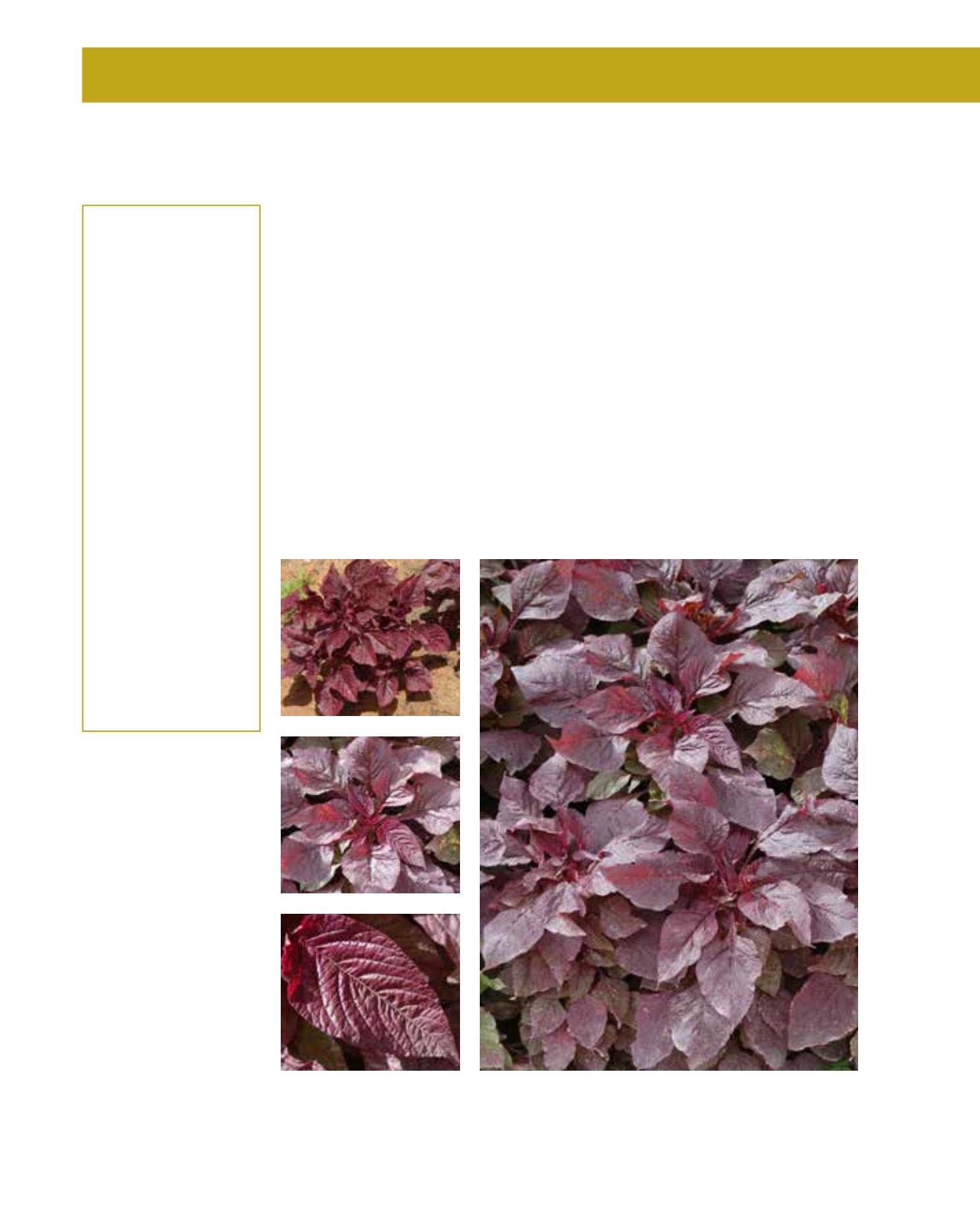

GENERAL
Origin
:
tropical
Vigour
:
fast growing
Humidity
:
semi-arid, very
humid
Propagation :
sowing and
pricking out,
direct sowing
Maintenance :
high
CONDITIONS
Dessication :
resistant
Stagnant water :
vulnerable
Irrigation
:
low
Salinity/ppm :
low (1000 ppm)
Hardiness
:
0°C
SHAPE
Type
:
annual, biennial,
perennial
Height
:
0.6 m-0.8 m
Spread
:
0.4 m-0.6 m
Foliage
:
evergreen
FLOWER
Colour
:
white, light green
Size
:
12 cm
Period
:
April - May
FRUIT
Type of fruit :
capsule
Fruit size
:
0.2 cm
Toxicity
:
edible when
processed
The genus Amaranthus contains about 70 species, which are generally grown for their colourful,
edible leaves and long pendulous flowers reminiscent of a fox’s tail. The Amaranths originate
in tropical Asia, but are even to be found in Mexico in dry desert areas. In Arriyadh, a strain
of A. tricolor with its dark red to purple leaves is often to be seen on farms, and, owing to its
copious seed production and easy germination, the plants seem to have escaped their agricultural
environment and now appear as ornamental plants in many places. Usually an erect, bushy
annual with ovate, pointed to rounded leaves up to 5 cm long, the whitish-green flowers produce
very small, black or red-brown seeds. These fast-growing plants can also be grown as perennials,
requiring full sun to partial shade, and reach a height of 80 cm. Not very frost-hardy, they
require water until establishment, but are otherwise quite drought-tolerant. Seed should be sown
in spring in fertile, well-drained garden soil, although they will also do well on poor soils. Plants
are subject to attacks by aphids. Amaranthus is used as a leaf vegetable, comparable to spinach:
the leaves can be eaten raw or boiled and young stems can be served like asparagus. They also
have medicinal properties and are rich in minerals and vitamins. As an ornamental in the garden
with its attractive coloured leaves, A. tricolor makes a great impact in borders or in large planters.
51
Amaranthus tricolor,
Amaranthaceae
Joseph’s Coat
















